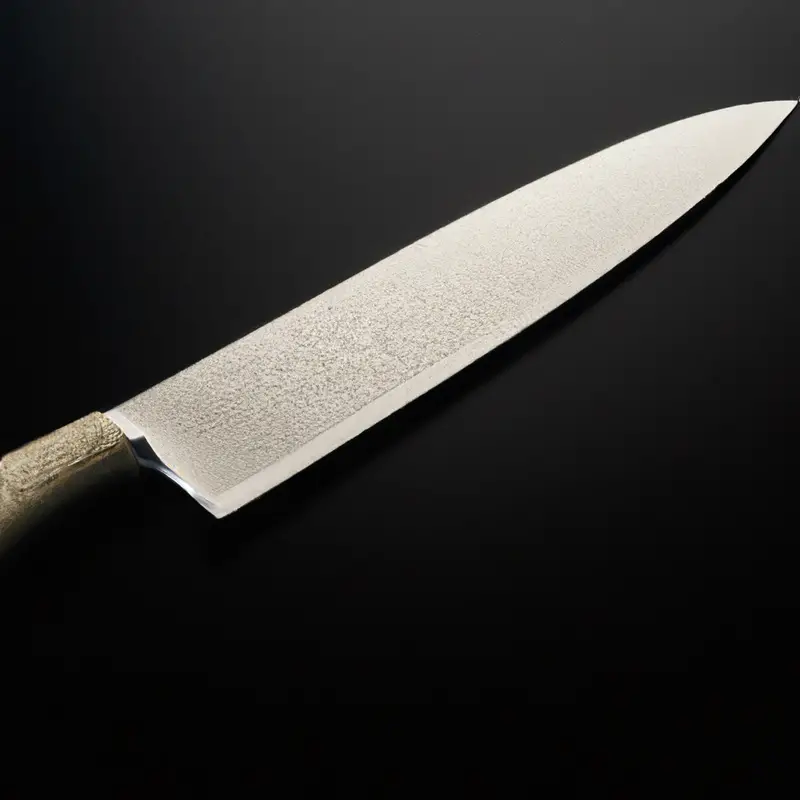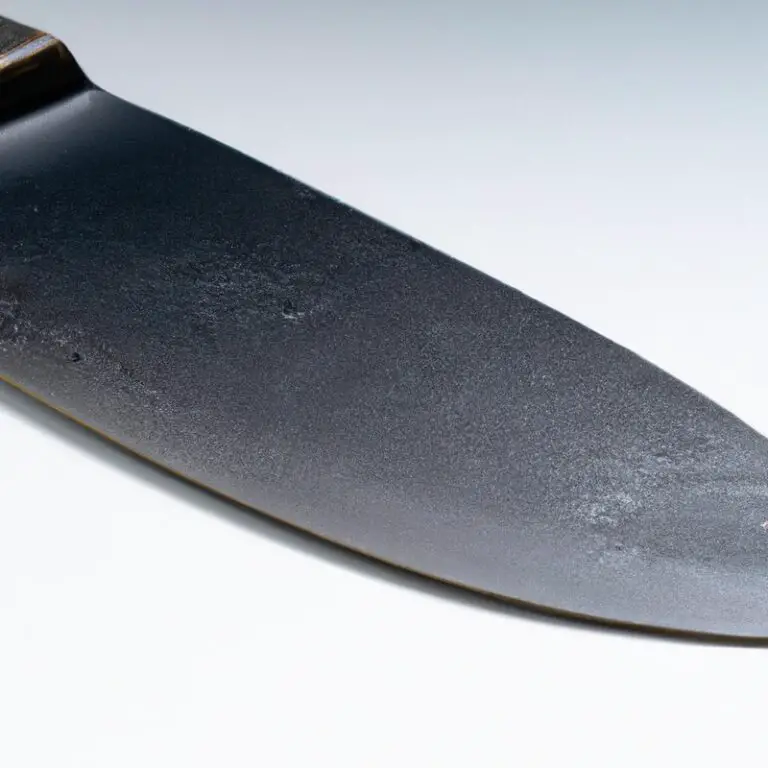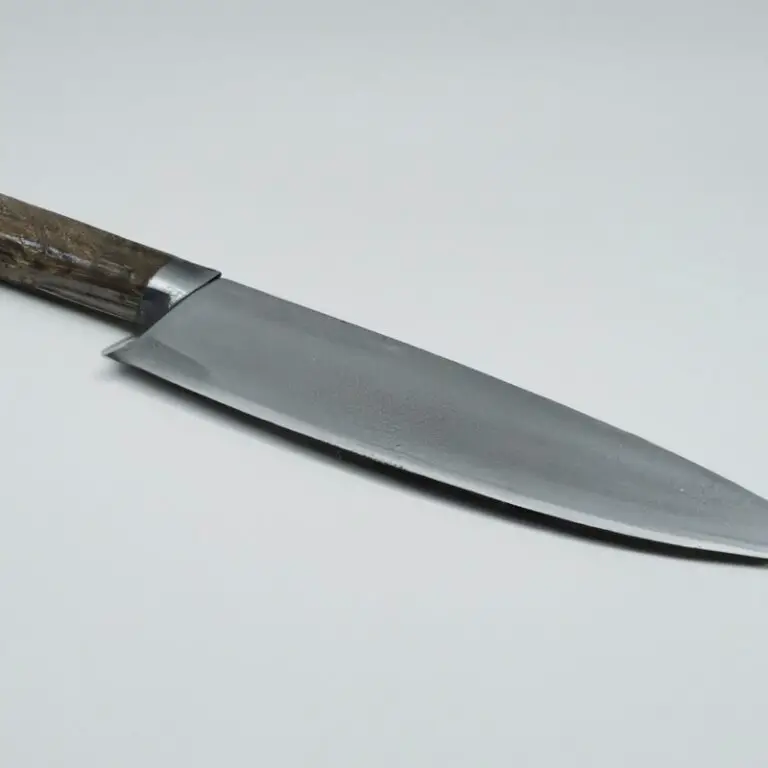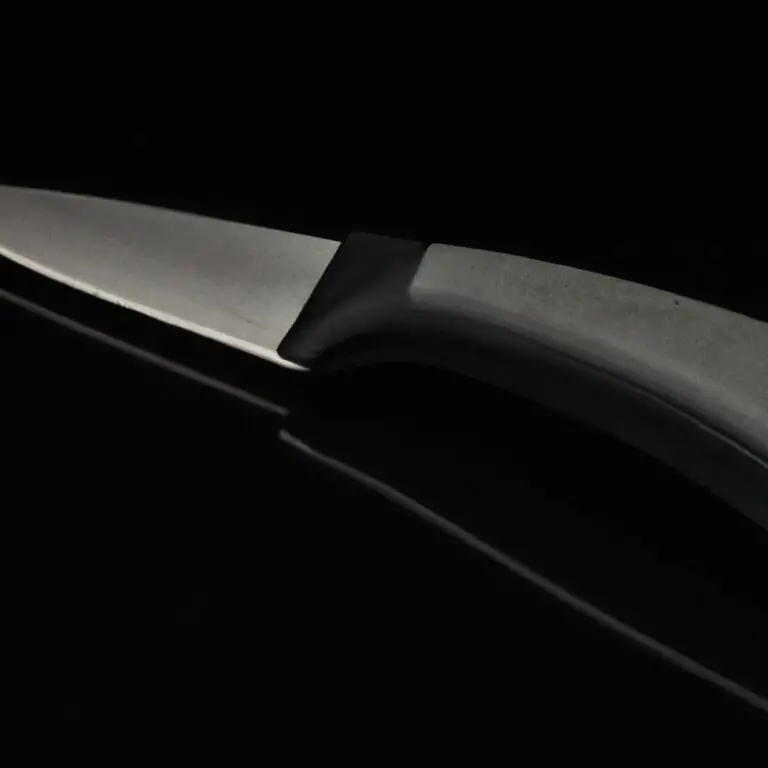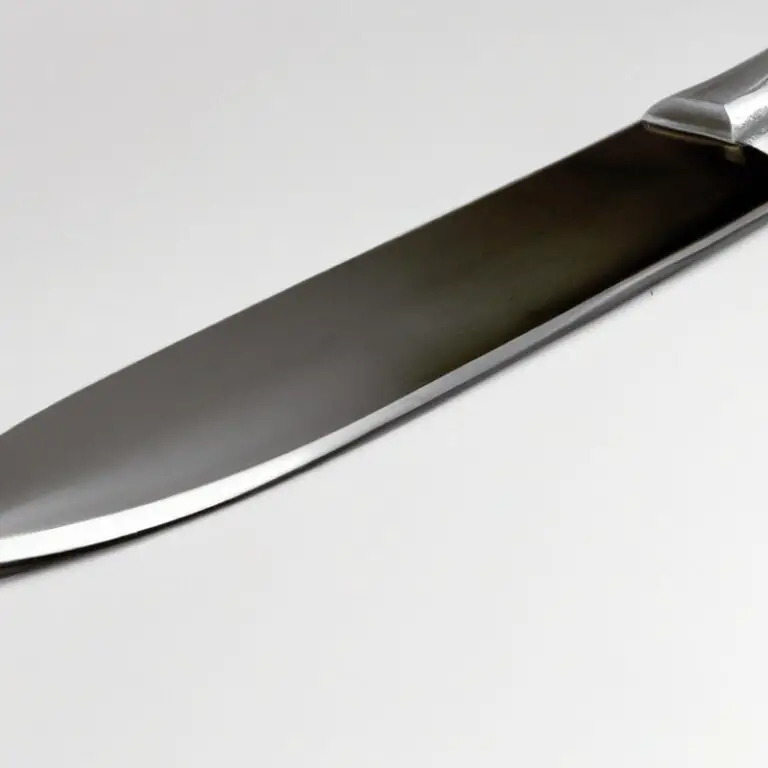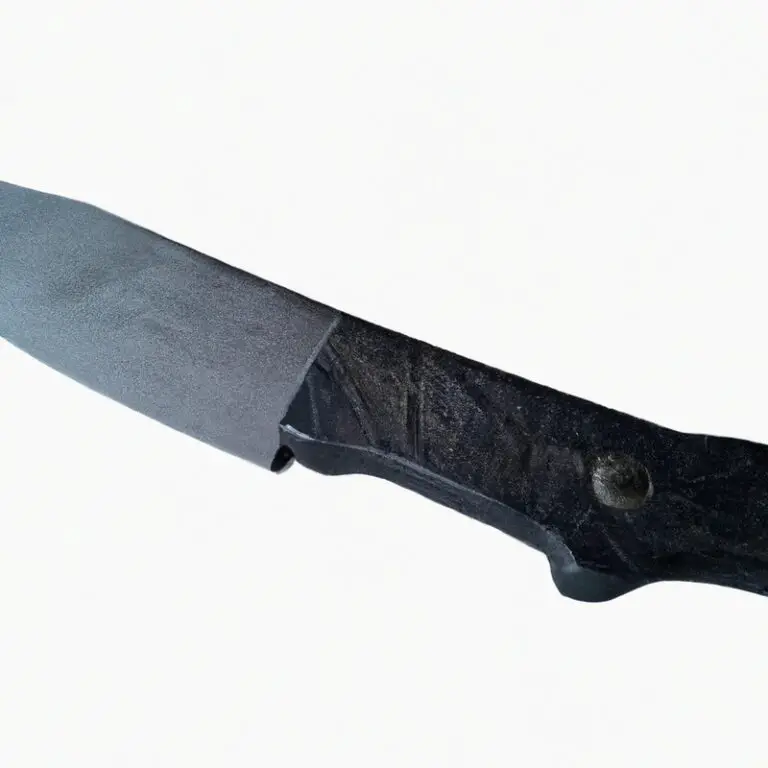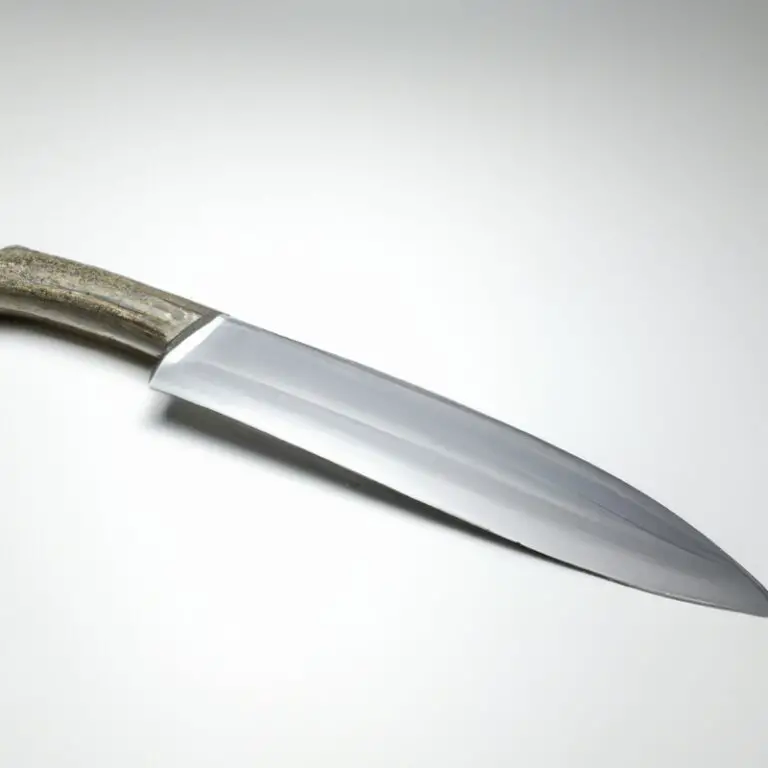How To Achieve Controlled Slicing Motions With a Gyuto Knife? Slice Like a Pro!
Key Takeaways:
- Proper technique and practice are key to achieving controlled slicing motions with a Gyuto knife.
- Choose a Gyuto knife with a sharp blade and comfortable handle that fits your hand well for optimal cutting performance.
- The Rockwell hardness rating and blade material of a Gyuto knife can affect its durability and sharpness over time.
- Keep your Gyuto knife clean and well-maintained to maximize its lifespan and cutting efficiency.
A good chef’s knife is the most valuable tool in the kitchen. If you’re looking to maximize the efficiency of your slicing, a Gyuto knife is the perfect choice.
Achieving perfect cuts not only requires a sharp knife but also the right technique and control.
Whether you’re carving meat or chopping vegetables, mastering the art of controlled slicing motions will make your life easier in the kitchen. In this article, I’ll share with you everything you need to know about using a Gyuto knife, from the anatomy of the blade to proper techniques and maintenance tips, to elevate your slicing game.
| Gyuto knife slicing technique | Steps to achieve controlled slices |
|---|---|
| Hand position | Maintain a grip on the handle with your dominant hand and place your other hand gently on the spine of the blade to guide the knife. |
| Blade angle | Hold the knife at a 15-20 degree angle to the cutting board, allowing the blade to make contact with the ingredient and slice through it with minimal effort. |
| Cutting motion | Move the knife in a forward and back motion while maintaining a consistent blade angle to keep slices uniform. |
| Cutting rhythm | As you slice, work on maintaining a steady pace to ensure even slices and reduce the risk of slipping or inaccurate cuts. |
Understanding the anatomy of a Gyuto knife: A guide to blade thickness, length, and shape for controlled slicing
To achieve controlled slicing motions with a Gyuto knife, it’s crucial to understand its anatomy. Gyuto knives typically have a blade length of 210-270mm and a thickness ranging from 1.5-3mm.
The blade’s shape features a flatter belly and a slightly curved edge, which allows for the perfect rocking motion.
Moreover, the blade’s width and thickness determine the weight and balance of the knife, which affects its handling. A heavier blade with a thicker spine provides better stability for heavier tasks, while a lighter blade with a thinner spine offers greater precision for delicate cuts.
Lastly, the blade’s material influences its performance and durability.
High-carbon stainless steel is commonly used for its sharpness, rust resistance, and durability. However, it requires regular maintenance to avoid corrosion.
Meanwhile, traditional carbon steel offers an even sharper edge but is prone to rusting if not adequately cared for.
By understanding the anatomy of your Gyuto knife, you can choose the best blade thickness, length, and shape for your specific slicing needs, ensuring a comfortable and precise cutting experience every time.
Sharpening your Gyuto knife: Techniques to achieve a razor-sharp edge for effortless slicing
A sharp Gyuto knife is crucial in achieving controlled slicing motions. Here are some techniques to sharpen your knife for a razor-sharp edge:
- Use a whetstone: A whetstone is the most efficient tool for sharpening your knife. Start with a coarse grit and gradually move to a finer grit until you achieve the desired sharpness.
- Maintain the correct angle: Maintain the correct angle when sharpening your blade. A 15-20 degree angle is ideal for most Gyuto knives.
- Use honing steel: Honing your knife with steel doesn’t sharpen but helps maintain the edge. Use a honing steel before and after every use to keep your blade straight and sharp.
- Test for sharpness: Test the sharpness of your knife by slicing through a sheet of paper. If it cuts through effortlessly, then your blade is sharp.
Remember to sharpen your Gyuto knife regularly to maintain its sharpness and efficiency.
The grip: The importance of grip and hand placement for controlled slicing with a Gyuto knife
A proper grip and hand placement are essential for effective and controlled slicing with a Gyuto knife. The pinch grip is the most preferred technique among chefs and experts as it ensures balanced control.
To achieve the pinch grip, place your index finger and thumb on either side of the blade’s base and wrap the remaining fingers around the handle.
This grip provides the best power and control and enables you to guide the knife smoothly while slicing through the food. Additionally, it also allows you to apply the correct amount of pressure and forces the blade to work with the motion of your arm and hand, making cutting a much smoother and more efficient process.
Hence, it is essential to practice the pinch grip regularly to achieve a consistently controlled slicing motion and a perfect, presentable cut.
The proper cutting board: Choosing the right cutting board for optimal control and precision with your Gyuto knife
Choosing the right cutting board is crucial for achieving optimal control and precision with your Gyuto knife. When selecting a cutting board, consider the texture, hardness, and resilience to avoid dulling your blade or damaging the board.
Wooden cutting boards are an excellent option as they are gentle on your knife’s edge and offer a good grip for your ingredients.
Choose a hardwood board, such as maple or cherry, as they are sturdy and resist scratches better than softer wood types. Plastic cutting boards are also a popular choice due to their affordability and low maintenance.
Look for high-density polyethylene (HDPE) boards, which are non-porous and antimicrobial-resistant, preventing bacteria buildup.
Avoid glass, marble, or ceramic cutting boards as they can damage your knife’s edge and increase the risk of slippage, leading to injuries. It’s important to note that even the best cutting board can wear down your knife over time, so it is essential to regularly sharpen your blade and replace your cutting board when it starts showing signs of wear and tear.
In summary, choose a wooden or plastic cutting board with a texture that provides a good grip and is gentle on your knife’s edge.
Avoid using hard surfaces like glass or ceramic, as they may damage your knife and lead to injuries.
Mastering the pinch grip: How to use the pinch grip technique for balanced and precise cutting with your Gyuto knife
To master the pinch grip, place your thumb and index finger on the blade while the rest of the fingers wrap around the handle. This grip provides balance and control, allowing for precise cutting.
Consistently applying this technique helps to improve your slicing skills with a Gyuto knife.
Start by practicing on vegetables and fruits to develop muscle memory before attempting meat. Remember to maintain a firm grip on the handle and keep your wrist straight to maximize the benefits of the pinch grip.
The rocking motion: Achieving the perfect rocking motion for a controlled and efficient slicing technique with your Gyuto knife
The rocking motion is an essential technique for achieving controlled and efficient slicing with a Gyuto knife. To execute this motion, start by placing the blade of the knife on the cutting board with the tip of the knife lifted.
With your dominant hand holding the handle of the knife and your non-dominant hand pressing down on the top of the blade, rock the knife back and forth while slicing through the food.
The key to achieving a perfect rocking motion is to maintain a consistent angle between the blade and cutting board throughout the slicing process. Avoid lifting the tip of the knife too high or pushing the blade too far down, as this can result in uneven cuts and a loss of control.
Practice the rocking motion with a variety of food items to perfect your technique.
With time and practice, you will be able to achieve smooth and precise slicing motions with your Gyuto knife. Remember to always keep safety in mind and maintain a firm grip on the handle of the knife to prevent accidents.
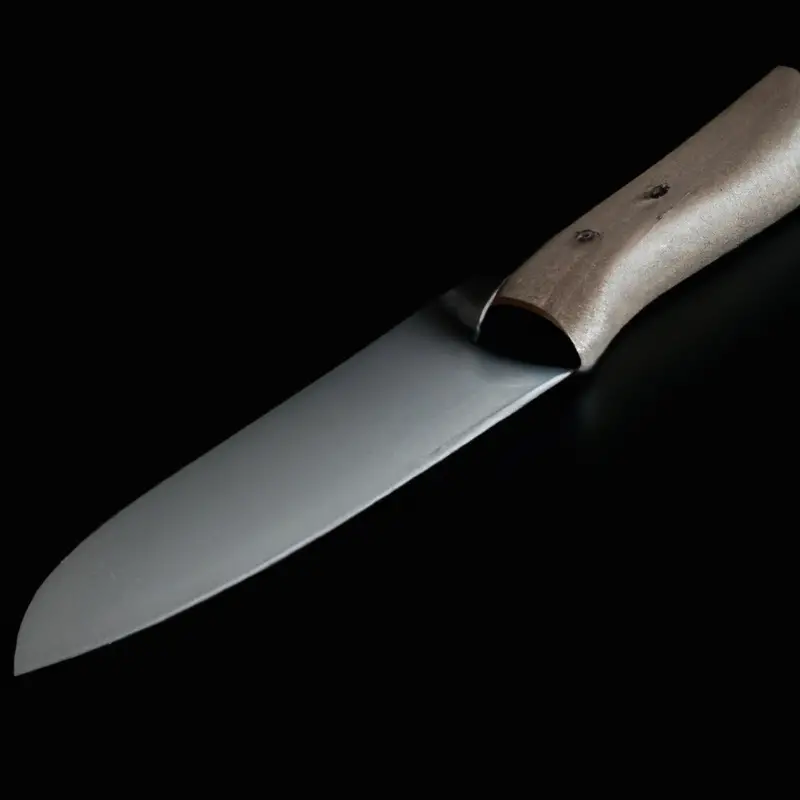
The slicing technique: How to achieve a smooth and steady slicing motion with your Gyuto knife for perfect meat cuts
To achieve a smooth and steady slicing motion with your Gyuto knife for perfect meat cuts, follow these steps:
- Start by ensuring that your Gyuto knife is sharp, which makes cutting much easier and more efficient.
- Hold the knife perpendicular to the cutting board and use the pinch grip technique for stability and precision.
- Slightly rock the blade back and forth to create a sawing motion and cut with a continuous motion.
- Use the entire blade length for each slice and avoid sawing back and forth, which can tear the meat and create an uneven cut.
- Ensure that the pressure on the blade is consistent and steady to maintain a uniform thickness of the slices.
- Practice consistently and maintain proper knife maintenance to maximize performance.
By following these steps, you can achieve a smooth and steady slicing motion with your Gyuto knife for perfect meat cuts.
Maintaining your Gyuto knife: Tips for proper maintenance to ensure longevity and optimal performance of your Gyuto knife
Proper maintenance is essential to ensure the longevity and optimal performance of your Gyuto knife. Here are some tips to help you maintain your knife:
- Clean your Gyuto knife after each use with mild soap and water.
- Dry the knife thoroughly with a clean towel to prevent rust and corrosion.
- Store your knife properly in a knife block or on a magnetic strip, away from moisture.
- Avoid putting your knife in the dishwasher as it can damage the blade and handle.
- Sharpen your knife regularly with a sharpening stone or honing rod to maintain its sharpness.
- Use a honing rod before each use to realign the blade and maintain its edge.
- Avoid chopping or cutting hard materials, such as bones or frozen food, with your Gyuto knife.
- Oil your knife occasionally with food-grade mineral oil to prevent rust and corrosion.
By following these tips, you can ensure that your Gyuto knife remains in top shape, allowing you to achieve controlled slicing motions with ease.
Practicing with other food items: How to improve your slicing skills by practicing with other food items besides meat
Practicing with other food items is an excellent way to improve your slicing skills beyond just meat. By practicing with a range of food items, you can build your confidence and develop your cutting techniques while expanding your culinary repertoire.
Fruits and vegetables such as cucumbers, tomatoes, and carrots are perfect options to practice your slicing skills.
These food items offer different textures and densities that can help you achieve a varied range of slicing motions and techniques with your Gyuto knife. Consider practicing with ingredients like bread and cheese for honing your knife skills, as they offer different levels of resistance and allow you to control your cutting force and precision.
Practicing with eggs can also be useful for honing your skills.
Eggs are delicate and require a steady hand and precision to avoid cracking while slicing. Remember to focus on proper grip and hand placement, as well as choosing the right cutting board for different ingredients.
Practice these techniques consistently, and you’ll soon be confident and skilled in slicing a variety of ingredients with your Gyuto knife.
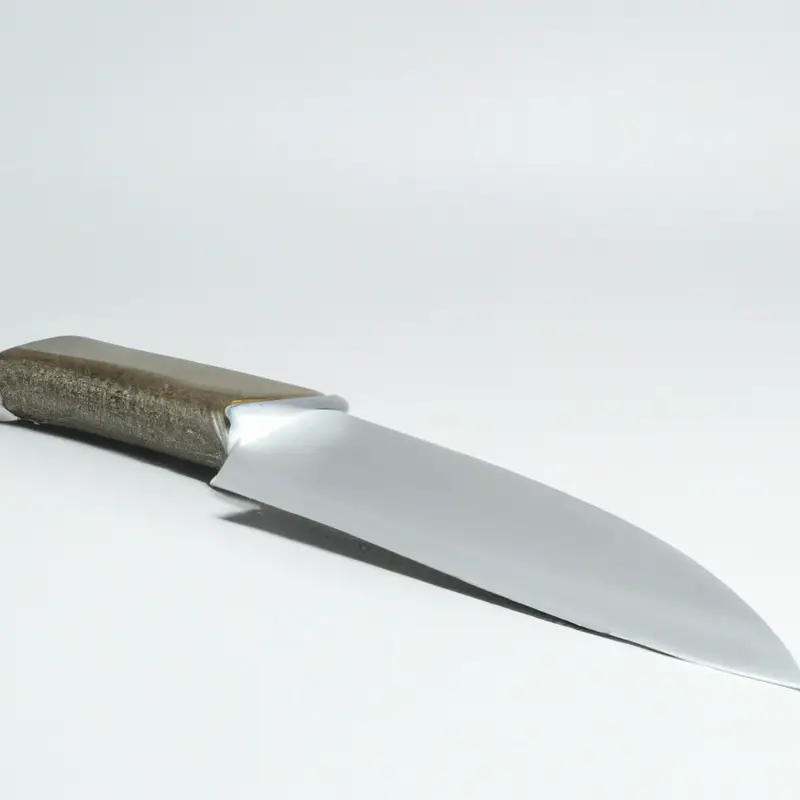
Safety tips: Important safety tips to keep in mind when using your Gyuto knife for controlled slicing motions
Safety should be the top priority when using a Gyuto knife for controlled slicing motions. Here are some important safety tips to keep in mind:
- Always use a sharp knife: A dull knife can slip and cause accidents, so make sure your knife is in good condition and sharpened properly.
- Keep your fingers away from the blade: Use the pinch grip technique to hold the knife and keep your fingers away from the blade.
- Use a cutting board: Avoid slicing on a hard surface, and use a cutting board instead. A damp towel placed underneath can prevent the board from slipping.
- Keep the blade away from your body: Always cut away from your body and avoid pulling the knife towards your hand.
- Focus when cutting: Avoid distractions and focus on the cutting task at hand. Don’t multitask or cut while distracted.
- Store the knife safely: Store your knife in a protective cover or a designated knife block to prevent accidents and injuries.
By following these safety tips, you can prevent accidents and injuries while achieving perfect slices with your Gyuto knife.
Final Verdict
Mastering the art of controlled slicing with a Gyuto knife requires knowledge, skill, and practice. It’s crucial to understand the anatomy of the knife, sharpening techniques, and the proper grip and hand placement.
Choosing the right cutting board and mastering the pinch grip and rocking motion are also crucial for achieving controlled slicing.
The slicing technique itself can be improved through practicing with various food items and maintaining the knife’s quality through proper maintenance. Remember always to keep safety in mind when using a Gyuto knife.
By following these tips, you can achieve precision and efficiency in your slicing, elevate your cooking game, and impress your guests.
With a little practice, you too can become a master of controlled slicing with your Gyuto knife, unlocking endless culinary possibilities.

